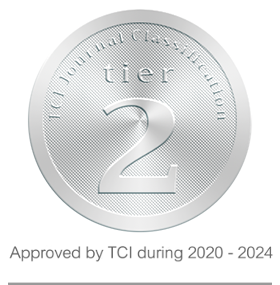Comparison of RNA Extraction Methods for Gene Expression from Stem of Rubber Tree (Hevea brasiliensis Muell-Arg.)
Keywords:
Rubber tree, RNA extraction, RT-qPCR, ยางพารา, การสกัดอาร์เอ็นเอ, เทคนิค RT-qPCRAbstract
RNA quality and quantity are critical for gene expression analysis. Isolating high-quality RNA from the stem of rubber tree is often difficult due to large quantities of polysaccharides, polyphenols, and other compounds that bind or co-precipitate with the RNA. This work aimed to obtain an efficient method for RNA isolation to reduce extraction time without reducing the quality and yield. RNA isolation methods were compared between Rubio-Piña and Zapata-Pérez (2011) (method 1) and Gambino et al. (2008) (method 2). It was found that method 1 gave the RNA concentration at 188.97 ng/µl which had an OD260/280 ratio of 1.85. RNA extraction by method 2 gave higher RNA concentration at 642.93 ng/µl and OD260/280 was 1.97. Method 2 was the most efficient that gave high quality, integrity, and an equal amount of RNA. Afterward, RNA was further used for gene expression analysis using the real-time quantitative polymerase chain reaction (RT-qPCR) technique. It was demonstrated that the RNA could be used as a template for 18S rRNA and APX1 (Ascorbate peroxidase) transcript amplification. Taken together, method 2 was the ideal method for isolation of RNA from stem of rubber tree using for gene expression analysis.
RNA quality and quantity are critical for gene expression analysis. Isolating high-quality RNA from the stem of rubber tree is often difficult due to large quantities of polysaccharides, polyphenols, and other compounds that bind or co-precipitate with the RNA. This work aimed to obtain an efficient method for RNA isolation to reduce extraction time without reducing the quality and yield. RNA isolation methods were compared between Rubio-Piña and Zapata-Pérez (2011) (method 1) and Gambino et al. (2008) (method 2). It was found that method 1 gave the RNA concentration at 188.97 ng/µl which had an OD260/280 ratio of 1.85. RNA extraction by method 2 gave higher RNA concentration at 642.93 ng/µl and OD260/280 was 1.97. Method 2 was the most efficient that gave high quality, integrity, and an equal amount of RNA. Afterward, RNA was further used for gene expression analysis using the real-time quantitative polymerase chain reaction (RT-qPCR) technique. It was demonstrated that the RNA could be used as a template for 18S rRNA and APX1 (Ascorbate peroxidase) transcript amplification. Taken together, method 2 was the ideal method for isolation of RNA from stem of rubber tree using for gene expression analysis.
Downloads
Published
How to Cite
Issue
Section
License

This work is licensed under a Creative Commons Attribution-NonCommercial-NoDerivatives 4.0 International License.



